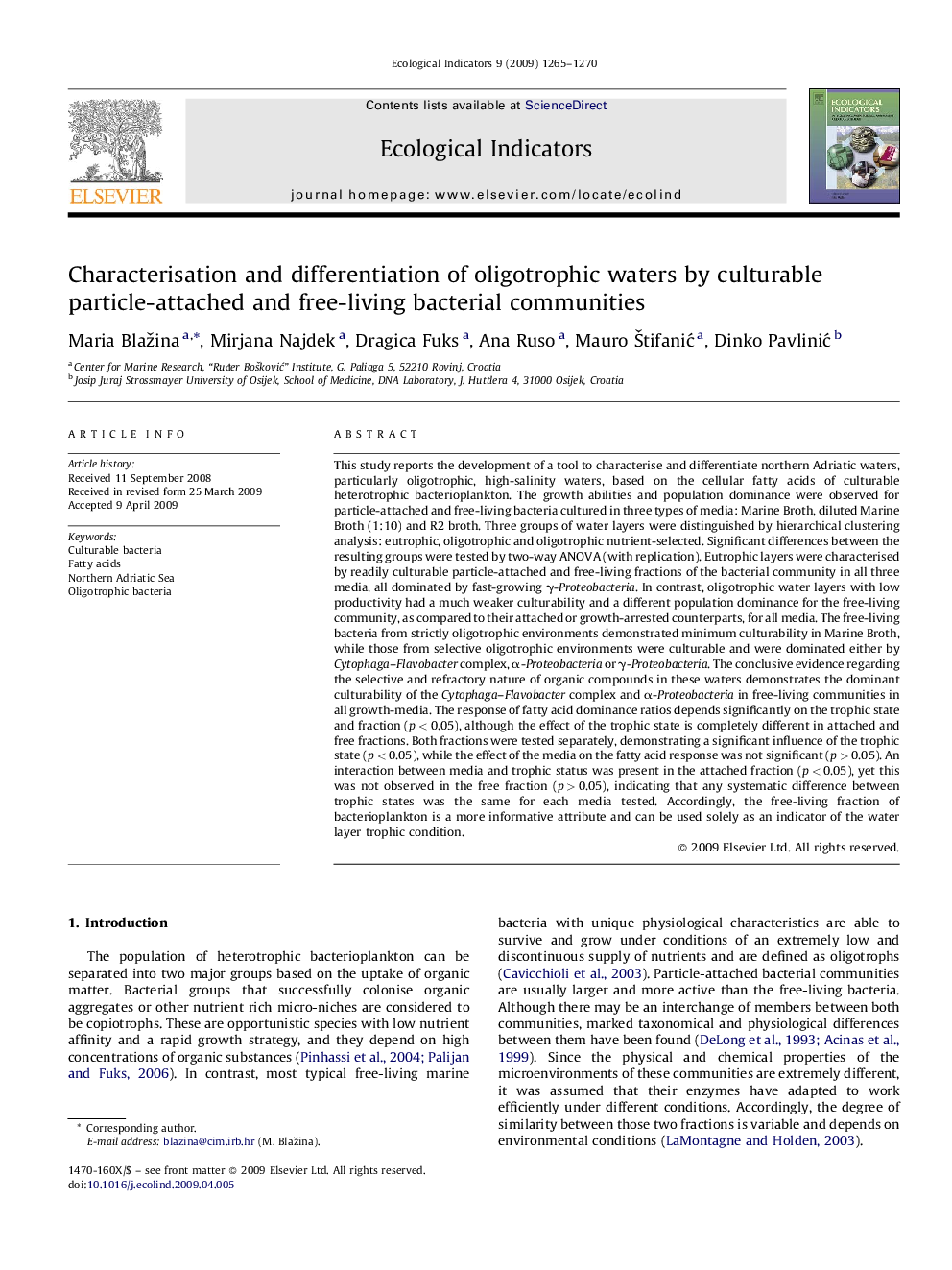| Article ID | Journal | Published Year | Pages | File Type |
|---|---|---|---|---|
| 4374355 | Ecological Indicators | 2009 | 6 Pages |
This study reports the development of a tool to characterise and differentiate northern Adriatic waters, particularly oligotrophic, high-salinity waters, based on the cellular fatty acids of culturable heterotrophic bacterioplankton. The growth abilities and population dominance were observed for particle-attached and free-living bacteria cultured in three types of media: Marine Broth, diluted Marine Broth (1:10) and R2 broth. Three groups of water layers were distinguished by hierarchical clustering analysis: eutrophic, oligotrophic and oligotrophic nutrient-selected. Significant differences between the resulting groups were tested by two-way ANOVA (with replication). Eutrophic layers were characterised by readily culturable particle-attached and free-living fractions of the bacterial community in all three media, all dominated by fast-growing γ-Proteobacteria. In contrast, oligotrophic water layers with low productivity had a much weaker culturability and a different population dominance for the free-living community, as compared to their attached or growth-arrested counterparts, for all media. The free-living bacteria from strictly oligotrophic environments demonstrated minimum culturability in Marine Broth, while those from selective oligotrophic environments were culturable and were dominated either by Cytophaga–Flavobacter complex, α-Proteobacteria or γ-Proteobacteria. The conclusive evidence regarding the selective and refractory nature of organic compounds in these waters demonstrates the dominant culturability of the Cytophaga–Flavobacter complex and α-Proteobacteria in free-living communities in all growth-media. The response of fatty acid dominance ratios depends significantly on the trophic state and fraction (p < 0.05), although the effect of the trophic state is completely different in attached and free fractions. Both fractions were tested separately, demonstrating a significant influence of the trophic state (p < 0.05), while the effect of the media on the fatty acid response was not significant (p > 0.05). An interaction between media and trophic status was present in the attached fraction (p < 0.05), yet this was not observed in the free fraction (p > 0.05), indicating that any systematic difference between trophic states was the same for each media tested. Accordingly, the free-living fraction of bacterioplankton is a more informative attribute and can be used solely as an indicator of the water layer trophic condition.
